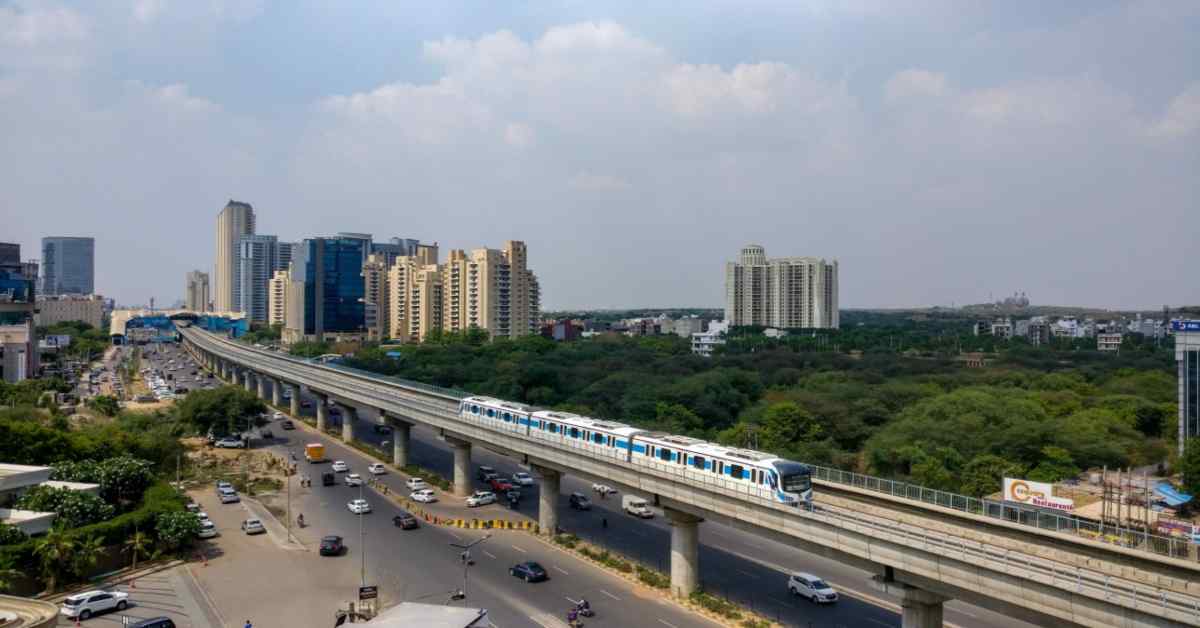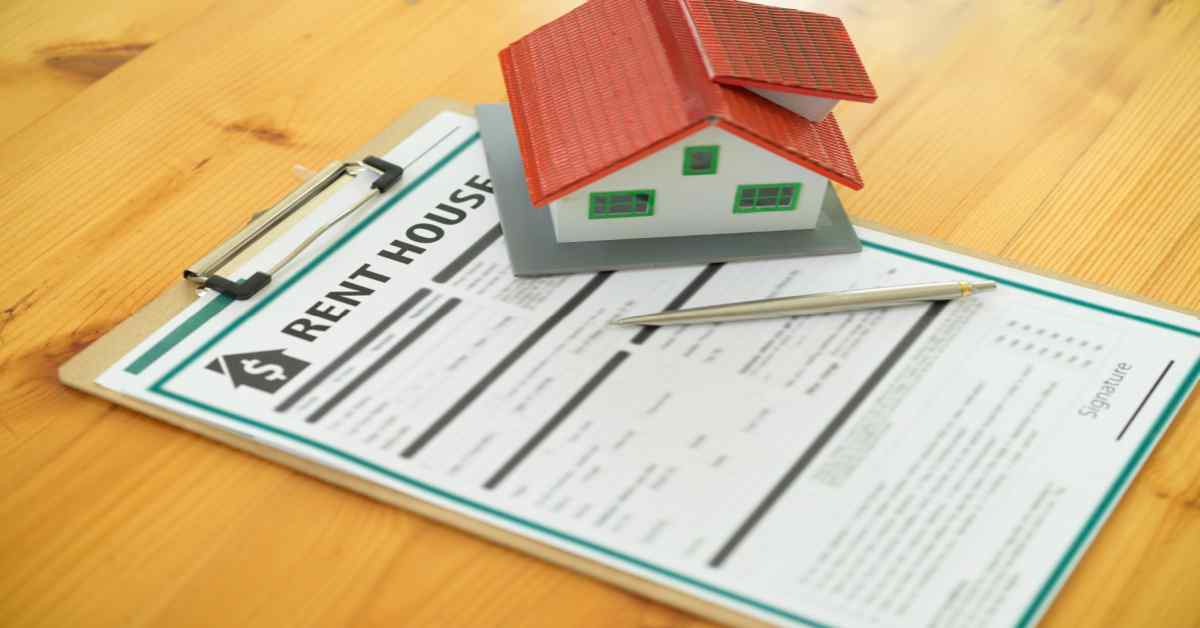Table of Contents
Quality Service Guarantee Or Painting Free

Get a rental agreement with doorstep delivery

Find the BEST deals and get unbelievable DISCOUNTS directly from builders!

5-Star rated painters, premium paints and services at the BEST PRICES!
Loved what you read? Share it with others!


Submit the Form to Unlock the Best Deals Today
Check Your Eligibility Instantly

Experience The NoBrokerHood Difference!
Set up a demo for the entire community
Gurugram Metro Routes: Map, Stations, Timings and Latest Updates 2025
Table of Contents
Imagine a Gurugram where traffic woes are a thing of the past, and getting around is a breeze. This vision is inching closer to reality with the development of Gurugram Metro Routes. A robust metro system is the lifeblood of any thriving metropolis, and Gurugram is no exception. Dive into Gurugram Metro Routes, the game-changer poised to transform daily commutes, empower urban planning, and unlock real estate opportunities.
Metro Routes of Gurgaon
Gurugram Metro Routes, also known as the Rapid Metro Gurugram, offer a taste of the city's future with convenient connectivity. This 11.2-kilometre route boasts 11 stations, including HUDA City Centre (Millennium City Centre), Sikanderpur, and Cyber City, connecting key business hubs and residential areas. Trains operate daily with a frequency that varies depending on peak and off-peak hours. While there are no direct interchanges with other metro routes, the upcoming expansion promises seamless integration with the wider Delhi Metro network.
List of Gurgaon Metro Stations:
- Sikanderpur
- HUDA City Centre (Millennium City Centre)
- Sector 21
- Iffco Chowk
- Cyber City
- Sushant Lok
- MG Road
- Golf Course Extension Road
- Hero Honda Chowk
- Sector 55-56
- Cyber Hub
Key Stations and Landmarks:
- HUDA City Centre (Millennium City Centre): Connects to major office complexes and shopping malls.
- Sikanderpur: Provides access to NH8 and enjoys an interchange with the Delhi Metro Yellow Line (subject to confirmation).
- DLF Phase I, II, and III: Serves prominent residential neighbourhoods and business centres.
- Cyber City: A major business district with headquarters of several multinational companies.
- Other Stations: JMD Megapolis, Sikanderpur Market, Laburnum Chowk, Rajiv Chowk, and Sector 54/55 cater to various residential and commercial areas.
Train Frequency and Timings

Train frequency on the Gurugram Metro Route varies depending on peak and off-peak hours. Generally, trains run more frequently during peak morning and evening commutes (typically every 7-10 minutes) with a slightly lower frequency during off-peak hours and weekends.
Quality Service Guarantee Or Painting Free

Get a rental agreement with doorstep delivery

Find the BEST deals and get unbelievable DISCOUNTS directly from builders!

5-Star rated painters, premium paints and services at the BEST PRICES!
Gurugram Metro Timings & Fares
Planning a trip on the Gurugram Metro Routes? This table unveils the essential details for a smooth journey on Line 1 (Rapid Metro). Explore the fare structure.
| Type of Fare | Minimum Fare (Rs.) | Maximum Fare (Rs.) | Details |
| Token | 20 | 35 | Single journey, no distance specified |
| Smart Card | 20 | 35 | Rechargeable, 10-year validity |
Additional Smart Card Details
- Initial Cost: Rs. 150 (includes Rs. 50 refundable deposit)
- Recharge Amounts: Multiples of Rs. 100 (up to Rs. 3000 maximum)
A Glimpse into the Future Network
Gurugram's urban landscape is on the cusp of a transformation thanks to the ambitious plans for the Gurugram Metro network's expansion. This section delves into the blueprint for a more connected city, exploring the proposed extensions, new routes, and the visionary master plan that will redefine how residents navigate Gurugram.
The Expansion Blueprint:
The proposed network boasts a series of exciting additions designed to bridge geographical divides and enhance accessibility. Here's a sneak peek at what's on the horizon:
- HUDA City Centre - Cyber City with Dwarka Expressway Spur: This much-anticipated route, already under construction, will seamlessly connect Gurugram's business centres and residential areas. The Dwarka Expressway spur ensures easy access to major highways.
- Vatika Chowk - Panchgaon: This proposed 30-kilometer stretch aims to bring the convenience of metro travel to Gurugram's peripheries, opening doors for future development and decongesting central areas.
- Additional Corridors in the Pipeline- Discussions are underway for routes connecting Iffco Chowk to Manesar and MG Road to Pataudi Road. These extensions would further bolster Gurugram's metro network, creating a web of efficient public transport.
Mastering Connectivity: Key Corridors and Potential Stations
The master plan goes beyond just routes, meticulously identifying potential stations that cater to residents' needs. Imagine hopping on the metro right next to your office or a major shopping mall! The focus is on creating a network of well-placed stations that seamlessly integrate with existing infrastructure.
A Brighter Future for Gurugram
The proposed Gurugram Metro expansion is more than just a transportation project; it's a catalyst for growth. Improved connectivity is expected to:
- Reduce Traffic Congestion: By offering a convenient and reliable alternative to private vehicles, the metro will significantly ease traffic woes.
- Boost Real Estate: With enhanced accessibility, areas near metro stations are likely to witness a rise in property values, attracting residents and businesses.
- Sustainable Urban Development: The metro promotes a more eco-friendly mode of transportation, reducing air pollution and promoting a greener future for Gurugram.
A Catalyst for Real Estate Transformation
The expansion of the Gurugram Metro Routes isn't just about easing commutes; it's a potent force shaping the city's real estate landscape. Metro connectivity acts as a magnet, significantly influencing property values. Areas near stations witness a rise in demand for both residential and commercial spaces. Potential renters are drawn to the convenience of swift commutes, while businesses benefit from increased foot traffic and access to a wider talent pool. This surge in demand often translates to higher rental yields and property valuations.
The upcoming metro expansion unlocks a treasure trove of real estate opportunities in Gurugram. Investors and homebuyers can strategically focus on areas close to upcoming stations, anticipating future growth and potential capital appreciation. With improved accessibility, these neighbourhoods are poised to transform into vibrant hubs, attracting residents and businesses alike. So, whether you're seeking a convenient place to live or a prime location for your business, the Gurugram Metro Routes offer a roadmap for unlocking exciting real estate possibilities.
By stitching together key business districts, residential areas, and entertainment hubs, the metro has significantly impacted property values and development patterns across its 11 stations:
1. Sikanderpur: Already a bustling commercial hub, Sikanderpur has witnessed a surge in demand for office spaces and co-working facilities due to its excellent metro connectivity. Residential rents have also seen a rise, attracting young professionals seeking convenient commutes.
2. HUDA City Centre (Millennium City Centre): This station acts as a central point, connecting major residential areas like Sector 22 and DLF City. Property values surrounding the station have risen steadily, attracting a mix of residential and commercial development. Upscale shopping malls and luxury apartments are a growing trend.
3. Sector 21: This station caters primarily to residents of the adjoining sectors. The convenience of the metro has led to increased demand for rental properties, particularly for families seeking easy access to schools and recreational areas.
4. Iffco Chowk: Primarily a commercial zone, Iffco Chowk has seen a rise in office spaces and retail outlets due to improved connectivity. The potential for future expansion plans connecting Iffco Chowk to Manesar further fuels investor interest in the area.
5. Cyber City: A prominent business district, Cyber City has always commanded premium real estate prices. However, the metro has enhanced its accessibility, attracting a wider range of companies and potentially leading to further growth in office space rentals.
6. Sushant Lok: Primarily a residential area, Sushant Lok has experienced a rise in property values due to the metro's convenience. The area is becoming more attractive to families and young professionals seeking a comfortable living environment with easy access to other parts of the city.
7. MG Road: This station serves a mix of residential and commercial purposes. The metro has spurred the development of shopping centres and entertainment options in the vicinity. Additionally, existing residential properties have seen a rise in rental yields.
8. Golf Course Extension Road: This station caters to residents of upscale residential areas like DLF Phase 5. The metro has enhanced the desirability of these neighbourhoods, potentially leading to the further development of luxury apartments and high-end retail outlets.
9. Hero Honda Chowk: A prominent commercial hub, Hero Honda Chowk has seen a rise in demand for office spaces and showrooms due to improved connectivity. The metro has also made it easier for residents of nearby areas to access employment opportunities in this commercial district.
10. Sector 55-56: Primarily a residential area, Sector 55-56 is witnessing increased demand for apartments, particularly from young professionals seeking affordable housing with easy access to the city centre.
11. Cyber Hub: This station serves a vibrant entertainment zone with a plethora of restaurants, cafes, and bars. The metro has made Cyber Hub a more accessible destination for residents across Gurgaon, potentially leading to the development of additional entertainment options and nightlife hotspots.
Your Gateway to a Connected Future
The Gurugram Metro Route has revolutionised how you travel around this dynamic city. With improved connectivity on the horizon, various neighbourhoods are set to experience a surge in accessibility and potential. Are you considering a relocation near upcoming metro stations? Look no further than NoBroker for a seamless property search! Explore exclusive listings to buy, rent, or sell your dream home and unlock the convenience of the Gurugram Metro routes. Visit NoBroker today and experience the future of Gurugram living!
Frequently Asked Questions
Ans: In Delhi, India, a rapid transit system called Delhi Metro, encompasses the Yellow Line (Line 2). From Samaypur Badli in Delhi to Millennium City Centre in the nearby city of Gurugram in Haryana, the state there are 37 stations on this route.
Ans: The nearest railway station to Gurugram is Gurugram. The nearest airport station to Gurugram is Indira Gandhi.
Ans: High-rise apartments, office spaces, shopping centres, and restaurants are likely to flourish near stations, catering to the increased population and foot traffic.
Ans: Areas close to new stations are prime candidates for growth. Look for neighbourhoods mentioned in the expansion plans, particularly those that were previously less well-connected.
Ans: Absolutely! The Metro's main goal is to reduce traffic congestion by offering a reliable and efficient alternative to private vehicles. By encouraging more people to use public transport, the Metro should significantly ease traffic flow across the city.
Loved what you read? Share it with others!
Most Viewed Articles

Guide to Leasing Commercial Property to Large Franchises for Maximum Profit
January 31, 2025
31165+ views

Rental Agreements in India: Key Insights for Tenants & Landlords
January 31, 2025
28827+ views

Tax On Rental Income: Exemptions and Deductions
January 31, 2025
19536+ views

Leave and License Agreement: Legal Aspect and Format
January 31, 2025
18598+ views

Indian Rental Market Trends 2025: Analysing Rental Market in India
January 31, 2025
15558+ views
Recent blogs in
Renting a New House? Here’s a List of Things to Check
January 31, 2025 by NoBroker.com
Process of Renting Out a Home in India
January 31, 2025 by NoBroker.com
Elevate Your Real Estate Photography: A Step-by-Step Guide to Stunning Property Visuals
January 31, 2025 by NoBroker.com
5 Easy Steps to Rent Your Home in India
January 31, 2025 by NoBroker.com
Personalize Your Rental Homes the Right Way
January 31, 2025 by NoBroker.com





Join the conversation!